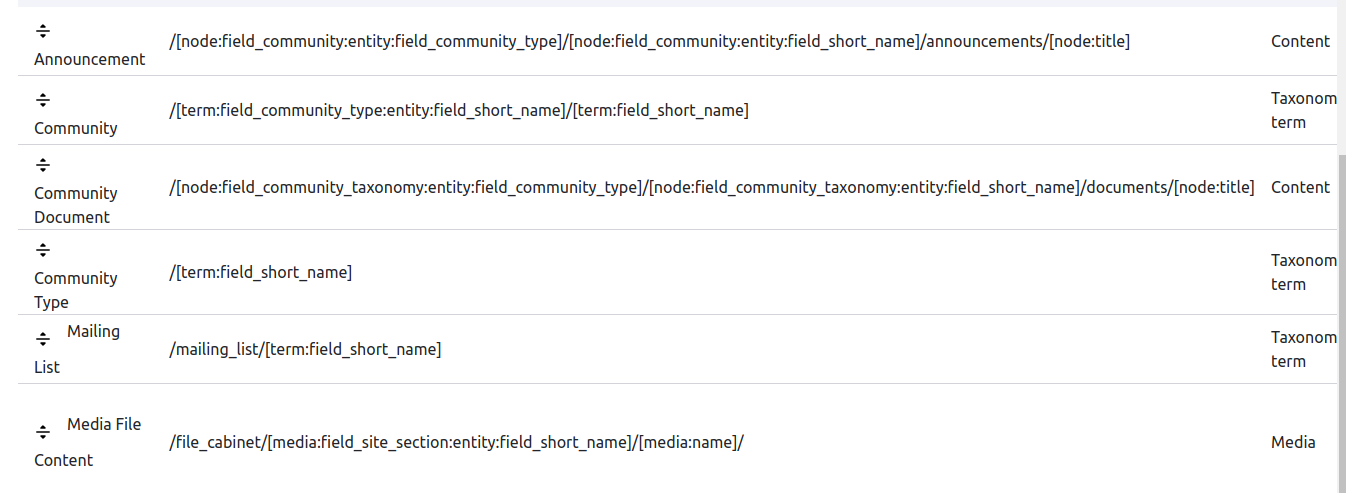Community Type Taxonomy, sets the first position in URL patterns.
Community Taxonomy, sets the second position of URL patterns.
The "Community Type" taxonomy is a high level taxonomy that helps set the site structures. It is used to define the top-level sections of a site. End-users do not interact with this taxonomy, it is used by programmatic functions for filtering, sorting and access control.
The "Community" taxonomy organizes the sites content into sections. This taxonomy is used as an "Entity Reference Field" with most Content Types.
Search indexes can be contained by the Community Taxonomy, preventing cross contamination when search results should stay within their community context.
A "Primary Community" user profile field points to the Community Taxonomy. This helps to set the context for which a user belongs in. The Primary Community is used to set default form fields, filter Views and to assist with content access validation.
Community Examples: /{community_type:short_name}/{community:short_name}/(content_title)
/department/town-office
/community/town-hill
/town/select-board
/town/library
Any Community without a Community Type assigned will default to the root of the site.
URL Example, with and without a Community Type:/{community_type:short_name}/{community:short_name}/
/town/library/{community:short_name}/
/library (Without a short name set)
Resource Type Taxonomy, sets the third position in URL patterns.
Resource Taxonomy, sets the fourth position of URL patterns.
Resource Examples:/{community_type:short_name}/{community:short_name}/{resource_type:short_name}/{resource:short_name}
/community/town-hill/outdoor-space/pavilion
/town/library/space-reservations/community-room
With a Taxonomy structure in place, naming patterns can be leveraged to organize files into a breadcrumb tree.
Taxonomy Tokens, just another area where Drupal shines as a CMS.

